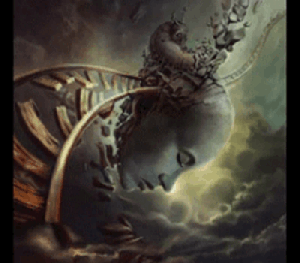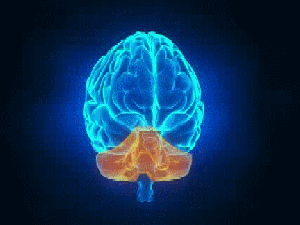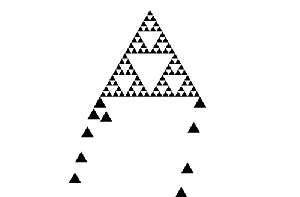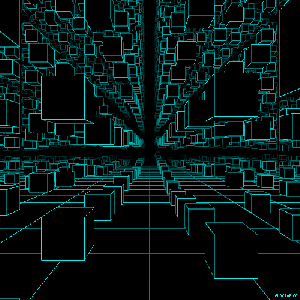The experiences of the autoconscious mind are related to neural activity in the association areas of the brain, with a relative grade of correspondence but not identity. The unity of the conscious experience is based upon the autoconscious mind but not from the complexity of the neuronal wiring/ conexions in the association areas in the cortex. The hypothesis of Karl Popper of the Three Worlds permits to comprehend the reality and the autoconscious mind, trying to solve the perennial quest between body and mind.
lunes, 30 de marzo de 2015
domingo, 29 de marzo de 2015
Consciousness and Quantum Theory perspective.
Introduction
The process of the consciousness as a field, implies conceptually to bring it out from the skull. Progress in theoretical physics during the past decade has led to a progressively more unified understanding of the laws of nature, culminating in the recent discovery of the so called completely unified field theories. The parallel discovery of a unified field of consciousness raises fundamental questions concerning the relationship between the two (2).
A detailed consideration of the relationship between the unified field and consciousness would benefit from a precise and comprehensive theory of consciousness comparable to the understanding of the unified field available through modern theoretical physics.
A key issue from a physiological standpoint is how the nervous system could conceivably interface with the super-unified scale in any significant way. Perhaps the first question to consider in this context is to what extent the nervous system actively participates in the experience and phenomena of pure consciousness. The physiological basis for such an interface is presently unclear, and would probably require some as yet undiscovered quantum-mechanical neurological mechanism (2). A review of relevant research areas, as well as the anesthesia data, leads to a postulation that consciousness is a property of quantum-like processes, within a brain field resonating within a core of structures, which may be the neural substrate of consciousness. This core includes regions of the prefrontal cortex, the frontal cortex, the pre- and paracentral cortex, thalamus, limbic system, and basal ganglia (3).
A detailed consideration of the relationship between the unified field and consciousness would benefit from a precise and comprehensive theory of consciousness comparable to the understanding of the unified field available through modern theoretical physics.
A key issue from a physiological standpoint is how the nervous system could conceivably interface with the super-unified scale in any significant way. Perhaps the first question to consider in this context is to what extent the nervous system actively participates in the experience and phenomena of pure consciousness. The physiological basis for such an interface is presently unclear, and would probably require some as yet undiscovered quantum-mechanical neurological mechanism (2). A review of relevant research areas, as well as the anesthesia data, leads to a postulation that consciousness is a property of quantum-like processes, within a brain field resonating within a core of structures, which may be the neural substrate of consciousness. This core includes regions of the prefrontal cortex, the frontal cortex, the pre- and paracentral cortex, thalamus, limbic system, and basal ganglia (3).
It is mentioned (1)
“Looking for consciousness in the brain is like looking in the radio for the announcer.”
– Nasseim Haramein, director of research for the Resonance Project
“Looking for consciousness in the brain is like looking in the radio for the announcer.”
– Nasseim Haramein, director of research for the Resonance Project
“Be the change you want to see in the world.”
– Mahatma Ghandi
– Mahatma Ghandi
“A fundamental conclusion of the new physics also acknowledges that the observer creates the reality. As observers, we are personally involved with the creation of our own reality. Physicists are being forced to admit that the universe is a “mental” construction. Pioneering physicist Sir James Jeans wrote: “The stream of knowledge is heading toward a non-mechanical reality; the universe begins to look more like a great thought than like a great machine. Mind no longer appears to be an accidental intruder into the realm of matter, we ought rather hail it as the creator and governor of the realm of matter. Get over it, and accept the inarguable conclusion. The universe is immaterial-mental and spiritual.”
– R.C. Henry, Professor of Physics and Astronomy at Johns Hopkins University , “The Mental Universe” ; Nature 436:29,2005)
– R.C. Henry, Professor of Physics and Astronomy at Johns Hopkins University , “The Mental Universe” ; Nature 436:29,2005)
Noam Chomsky would say, our consent to accept the present reality has been manufactured. If we continue down this path and continue to perceive and view reality as “this is just the way it is,” we will, in essence, prolong that type of existence and experience for the human race without ever changing it.
Definition of consciousness
The main risk of definition of consciousness is that a meaning judged too wild for inclusion, could eventually turn out to be the most worthwhile, thus delaying progress. For instance, the american philosopher Danah Zohar, describes consciousness as "something that includes general capacity for awareness and purposive response". By this description, she accepts the above two meanings of the word consciousness. She deems the consciousness is the bridge between the classical world and the quantum world. One of Quantum Mechanics' shortcomings is that it doesn't truly explain how reality emerges from the quantum world of elementary particles and probability waves.
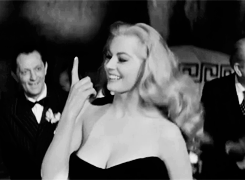
Any approach to consciousness in solving the brain-mind problem is how does the brain-mind bind together millions of dissimilar neuron activities into an experience of a perceptual whole.
Consciousness is "a difference that makes a difference" at the level of massive neuronal interactions in the most parallel-interactive anatomical structure of the mammalian brain, the cortico-thalamic (C-T) system. Other brain structures are not established to result in direct conscious experiences, at least in humans. Edelman deems that brain events corresponding to attentional selection are prominent and widespread. And attention generally results in conscious experiences, which may be needed to recruit widespread processing resources in the brain. But on the contrary, many neuronal processes never become conscious, such as the balance system of the inner ear (10).
Making a “definition of consciousness”, De Sousa (11) provided lists of phenomena which we all recognize as conscious — the waking state, the contents of momentary experiences, and then the propositional experiences of hope and belief in conscious thinking.
Complementarily on their side Singh & Singh (12), following their International Seminar on Mind, Brain, and Consciousness, lay out an overlapping but somewhat broader conception of consciousness, referred to as the called Consciousness Tetrad:
- Default consciousness: The state that separates the living from the non-living.
- Aware consciousness: Ranging from wakefulness, through drowsiness, to sleep — and also altered states from delirium to the comatose.
- Operational consciousness: Sensory, motor, cognitive, emotive, aesthetic, creative, etc.
- Exalted consciousness: A form of awareness, characterised by some, and by metaphysicians, as spiritual or a contact with a divine entity. For the authors, “Consciousness is a tetrad of brain functions (CT)”.When is recognized that brain imaging has been and can continue to be valuable in identifying a neural correlate of categories of mental activity — from the waking and altered awareness states to classes of conscious states, from sensory modalities to mental episodes such as recollection or even symptoms, arises a materialistic point of view in which medically, neurocognitively, and philosophically, Mind is the functioning of the brain.An approach to define ‘consciousness’ is to describe its uses and determine its boundaries, its essential nature, and mechanisms. It can be distinguished between ‘normal waking consciousness’; altered forms of waking consciousness underlying trance, absorption, hypnosis, dissociation, meditative states, drug states, and out of body experiences; and REM/dreaming and slow-wave/deep sleep — examining them by the basic characteristics and mechanisms of normal waking consciousness: cortical arousal, qualitative experiences, first-person subjectivity, intentionality, knowing objects and self (16).Going up with Dulany (11), consciousness the medium by means we live our lives — and it must have a special explanatory role in what it permits mentation and action by virtue of the symbolic representations it can carry. With symbolic contents we represent the present in sensory and perceptual experience, the past in beliefs and recollections and senses of familiarity — and a possible future as intended or expected or wished or feared or only imagined. We can even symbolically represent our own past or future mental activity in higher-order awareness. The name qualia is an attribute of quality when the experience about past and futures has an impact on our introspective experience.Even though his materialistic conception, David Chalmers states that "consciousness just is not the sort of thing that can be measured directly. What, then, do we do without a consciousness meter? How can the search go forward? How does all this experimental research proceed? I think the answer is this: we get there with principles of interpretation, by which we interpret physical systems to judge the presence of consciousness." We might call these pre-experimental bridging principles.They are the criteria that we bring to bear in looking at systems to say (a) whether or not they are conscious now, and (b) which information they are conscious of, and which they are not (13). Classically, measures of conscious perception in awake humans distinguish between objective performance, such as the ability to discriminate the presence, absence, or identity of distinct stimuli, from subjective reports, such as subjective ratings of the visibility of stimuli or confidence ratings of the accuracy of perceptual decisions, which are associated with conscious perception. Studies taking this approach have benefited from the application of “signal detection theory” (SDT), which provides robust methods for distinguishing objective performance from subjective performance (14).There is a panpsychist approach which gives us a new perspective on our own human mentality, and it allows, by extension, a better understanding of non-human minds. We can see both as existing on one continuum, comparable to and parallel with the physical continuum of being that we have long accepted. This provides us with a more naturalistic and parsimonious account of mind and consciousness (17).
Briefly, the Quantum Mechanics
These features were first explicitly formulated in the paper by A. Einstein, B. Podolsky and N. Rosen, reformulated later in a more convenient form by John Bell, and experimentally confirmed in the experiments of A. Aspect (20).
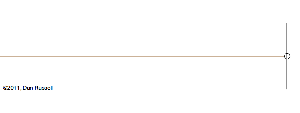
What does quantum mechanics describe? It might seem, since it is widely agreed that any quantum mechanical system is completely described by its wave function, that quantum mechanics is fundamentally about the behavior of wave functions (21). Paradoxes of quantum mechanics and the resulting so-called "problem of measurement" are known from the early years of quantum mechanics, but are not finally resolved up to now. An essential step in the attempts to solve these problems was made by Everett in its famous "many-worlds" interpretation of quantum mechanics. In the sixties the Everett's approach became much more popular. The Many-Worlds Interpretation (MWI) of quantum mechanics states that there are many worlds which exist in parallel at the same space and time as our own. The existence of the other worlds makes it possible to remove randomness and action at a distance from quantum theory and thus from all physics.
But many physicists think MWI is a very controversial approach, and most of them who work in quantum physics seem to believe that spending time questioning the (essentially untestable) interpretations of quantum physics is a waste of time.
When describing wave function, Erwin Schrödinger in 1935 referred: “That it is an abstract, unintuitive mathematical construct is a scruple that almost always surfaces against new aids to thought and that carries no great message.” Schrödinger noted that it may happen in radioactive decay that
the emerging particle is described … as a spherical wave … that impinges continuously on a surrounding luminescent screen over its full expanse. The screen however does not show a more or less constant uniform surface glow, but rather lights up at one instant atone spot.
Consciousness and quantum physics
According to the quantum physicist Paul Dirac, the light can be treated as waves or particles. In fact, in quantum mechanics, particles are regarded as waves. So then, the behaviour of these particles can be predicted, as it were, and,they are thus known as probability waves or Dirac wave particles.There is a wave/particle duality here. When the particle is not observed (when consciousness is not present), it remains a wave (a probability wave), but upon being observed (when consciousness is present) it becomes a particle (4).
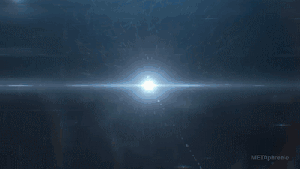
Consciousness or “mind-force” is evidently a potent force in nature. The mind is part, an indispensable part, of nature. Scientists such as David Bohm of the Queen Imperial College and Werner Heisenberg, who described the uncertainty principle, as well as many other scientists, evidently pinpointed this fundamental aspect.
Many who research on the brain-mind problem proceed with a prior assumption that consciousness is an emergent property of the brain (see emergentism), but quantum physics indicates that consciousness is related to the awareness that an electron appears to show in the wave/particle duality (double slit experiment: basically when the electron is observed by an instrument placed in the experiment, the electron behaves like a particle, but when is not being observed, the electron behaves like a wave . Quantum physicists have shown that the electron behaves differently when being observed by a human. (5).
Evolving concepts of neuroscience
The human brain without doubt is the most complex organ in the known universe. It is physical and biological. Therefore, it has to be amenable to scientific probing without the intervention of such considerations as the Gödel’s theorem, which states that there are statements in mathematical systems which are true but cannot be proven within those systems.
At the same time, cutting-edge research in the field of neuroscience has revealed the existence of a ‘unified field of consciousness’—a fourth major state of human consciousness, which is physiologically and subjectively distinct from waking, dreaming and deep sleep. In this meditative state, a.k.a. Samadhi, the threefold structure of waking experience—the observer, the observed and the process of observation—are united in one indivisible wholeness of pure consciousness.
These parallel discoveries of a unified field of physics and a unified field of consciousness raise fundamental questions concerning the relationship between the two. In that way, some authors deem the starting point should be neuroscience itself, not consciousness.
Stuart Hameroff states on consciousness that the general assumption in modern science and philosophy - the ‘standard model’ - is that consciousness emerges (again the emergentism, where consciousness is an epiphenomenon and it propposes that this change occurs as a result of physical conditions satisfied by the biological system), finally arising from the complex computation circuits among brain neurons, computation whose currency is seen as neuronal firings (‘spikes’) and synaptic transmissions, equated with binary ‘bits’ in digital computing. Consciousness is presumed to ‘emerge’ from complex neuronal computation, and to have arisen during biological evolution as an adaptation of living systems.
Nonetheless, on the basis of practical observations, these materialistic assumptions on consciousness have been rejected and now consciousness is regarded as a non-material entity capable of independent eternal existence (9).
Nonetheless, on the basis of practical observations, these materialistic assumptions on consciousness have been rejected and now consciousness is regarded as a non-material entity capable of independent eternal existence (9).
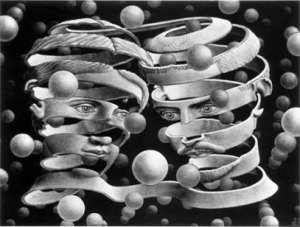
Due to many technical and conceptual advances, the neuroscience of consciousness has witnessed considerable progress over recent times. One key step towards understanding consciousness is to empirically narrow down neural processes associated with the subjective experience of a particular content. To unravel these neural correlates of consciousness (NCC) a common scientific strategy is to compare perceptual conditions in which consciousness of a particular content is present with those in which it is absent, and to determine differences in measures of brain activity; this approach relies upon particular brain areas such as the prefrontal cortex serving a crucial role in conscious perception; there are theories and empirical evidence suggesting that short-latency prefrontal activity facilitates perception (15). In normal healthy humans, the contents of consciousness have been examined mainly with psychophysical and neuroimaging techniques, unraveling that consciousness may be neither sufficient nor necessary for high-level cognitive functions, such as attention, cognitive control, and volition, at least in simple form (14).
Linking quantum mechanics and consciousness
The union between quantum mechanics and consciousness is shown to open up qualitatively new avenues for the unification of physics and psychology and, more broadly, of the sciences and the humanities. This may lead to an extension of the theory of consciousness and shed light on significant and previously misunderstood phenomena in the sphere of consciousness (19). During early decade of twenties of past century, physicist Wolfgang Pauli in collaboration with the great psychologist Carl Gustav Jung, they supposed particularly that quantum mechanics may help to explain strange psychic phenomena observed by Jung and called "synchronisms". Jung told of a synchronism if a series of the events happened such that these events were conceptually close but their simultaneous (synchronous) emergence could not be justified causally.
The idea of connecting consciousness with quantum mechanics was suggested not only by Pauli and Jung, but others as the physicist Roger Penrose. So, everything could be explained by natural sciences, on the grounds of quantum laws. Therefore, in order to explain consciousness, it has to apply quantum mechanics for analysis of the work of brain. It is now experimentally proved that reality in our world is quantum, and the conclusions based on classical concept of reality, are not reliable. The comprehension of the concept of quantum reality was achieved after long intellectual efforts of many scientists linking theory of consciousness with the realm of quantum mechanics (starting by Pauli and Jung and now close to being accomplished) marks a qualitatively new level of understanding quantum mechanics itself (18).
Quantum phenomena and living matter
Although to the light of modern physics the natural phenomena are reducible to quantum events in principle, the quantum mechanics does not always provide the best level of analysis. A growing body of evidence in biological models now describes for instance, in quantum context, the coherent transport in photosynthesis and magnetoreception in birds up to the quantum olfaction and single-photon effects in vision, so the field of quantum biology is making a "leapfrog" into the mainstream.
Recent experimental results and theoretical analyses have shown that thermal energy may assist, rather than disrupt, quantum coherent transport, especially in the ‘dry’ hydrophobic interiors of biomolecules. Specifically, evidence has been accumulating for the necessary involvement of quantum coherent energy transfer between uniquely arranged chromophores in light harvesting photosynthetic complexes. The ‘tubulin’ subunit proteins, which comprise microtubules, also possess a distinct architecture of chromophores, namely aromatic amino acids, including tryptophan (7).
Protein conformational dynamics and pharmacological evidence suggest that protein conformational states-fundamental information units ('bits') in biological systems-are governed by quantum events, and are thus perhaps akin to quantum bits ('qubits') as utilized in quantum computation. 'Real time' dynamic activities within cells are regulated by the cell cytoskeleton, particularly microtubules (MTs) which are cylindrical lattice polymers of the protein tubulin (8).
One of the issues in which there is more bridging between consciousness and quantum phenomena has been explores by Hameroff, when describes the microtubules acting as quantum processing units, with individual tubulin dimers conforming the computational elements. This model requires that the tubulin is able to switch between alternative conformational states in a coherent manner, and that this process may be rapid on the physiological time scale (9).
Protein conformational dynamics and pharmacological evidence suggest that protein conformational states-fundamental information units ('bits') in biological systems-are governed by quantum events, and are thus perhaps akin to quantum bits ('qubits') as utilized in quantum computation. 'Real time' dynamic activities within cells are regulated by the cell cytoskeleton, particularly microtubules (MTs) which are cylindrical lattice polymers of the protein tubulin (8).
One of the issues in which there is more bridging between consciousness and quantum phenomena has been explores by Hameroff, when describes the microtubules acting as quantum processing units, with individual tubulin dimers conforming the computational elements. This model requires that the tubulin is able to switch between alternative conformational states in a coherent manner, and that this process may be rapid on the physiological time scale (9).
Near-Death experiences
The near-death experiences are a complex phenomenon that occurs across different cultures and times. NDE is experienced at the time of being near to death, or before biological death. NDEs are caused by various situations such as accidents, serious illness, suicide attempts, surgery or birth, they do not influence the content of the NDE.
Observations on OBE (Out of Body Experience) and NDE (Near Death Experience ) show that while the body is in an anaesthetized or inactive state, consciousness can remain dis-embodied, observe events from outside the body, and later re-localize in the brain.
Neurophysiological research link the described phenomena of NDE consisting in cognitive, emotional, paranormal and transcendence components, with neurological substrate at temporal lobe, the amygdala, dorsal raphe nucleus, and with different neurotransmitter systems, given the findings of patients with temporal lobe epilepsy . In another hand, the field of consciousness is a concept which has been approached by different disciplines, called in different ways, seems to behave with the physical properties of the fields in the order of physics. Concepts have been proposed as primary order, implicate order, which have conceptual approach and definition from physics. The nervous system does not produce the consciousness field and consequently to seek consciousness "within" the physical circuitry of the brain is useless, just that it is seeking the screen image in the physical circuits of a TV. The inherent complexity and neurophysiological neuronal necessary for transduction or perception of the larger field of consciousness, and this field is accessed when someone is near to death, or dies (6).
Observations on OBE (Out of Body Experience) and NDE (Near Death Experience ) show that while the body is in an anaesthetized or inactive state, consciousness can remain dis-embodied, observe events from outside the body, and later re-localize in the brain.
Neurophysiological research link the described phenomena of NDE consisting in cognitive, emotional, paranormal and transcendence components, with neurological substrate at temporal lobe, the amygdala, dorsal raphe nucleus, and with different neurotransmitter systems, given the findings of patients with temporal lobe epilepsy . In another hand, the field of consciousness is a concept which has been approached by different disciplines, called in different ways, seems to behave with the physical properties of the fields in the order of physics. Concepts have been proposed as primary order, implicate order, which have conceptual approach and definition from physics. The nervous system does not produce the consciousness field and consequently to seek consciousness "within" the physical circuitry of the brain is useless, just that it is seeking the screen image in the physical circuits of a TV. The inherent complexity and neurophysiological neuronal necessary for transduction or perception of the larger field of consciousness, and this field is accessed when someone is near to death, or dies (6).
The autoconscious mind
The debate between body and mind is perennial, these fascinating question has been addressed and traditionally focused by religion, philosophy, then in more recent times by psychology, psychiatry, cognitive neural science and physics. Currently the search on the structure and nature of conscious experience shows that consciousness can be considered an irreductible entity that exists at a fundamental level and from a holonomic point can not be understood as the sum of simpler parts (22).
Based on a theory of Karl Raimund Popper, Eccles (23) deemed the hypothesis of the three worlds and propose that autoconscious mind interacts with cortical modules to explain how the interaction between body and mind occurs in nervous system in the brain and how the neuronal electrical activity is coordinated in a way that allows complex spatial-temporal model that conceptually integrates the concepts of matter and energy, subjective experiences, states of consciousness and culture as a product of human knowledge. The autoconscious mind continuously scrutinize the confirmation of cortical modules allowing reciprocity between modules and autoconscious mind. Once autoconscious mind slightly modifies the depolarized cortical modules for the convenience and preference of the case, these modules (probably hundreds) react as a whole, releasing information on the commissural fibers. In contrast, when the modules are in repolarization function, autoconscious mind can not find a pattern to interpret, and consequently deals no information which is equivalent to unconscious states. In states of rapid eye movement sleep, autoconscious mind regains its ability to interact with some depolarized cortical modules, causing the states of consciousness we call dreams. Probably autoconscious mind selects the depolarized cortical modules according to quantum laws of probability.This form of selection according to quantum laws are based on the small size of the synaptic cleft (between 200-300 nanometers) and the exocytosis of synaptic vesicles, which at that time did not depends for its movement in a viscous medium, but the particle size, magnitudes are in the range of quantum mechanics (24).
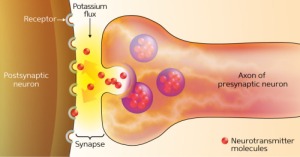
Thus, autoconscious mind somehow selects the vesicles in the synaptic cleft when they are on their way to exocytosis, depending on the individual intention to act in a quantum field of probabilities.
Conclusions
The elegance and importance of this model of consciousness linked to the model of quantum mechanics, explains many of the observed properties of human consciousness, bonding simultaneously physics, neuroscience, psychology and traditional knowledge of eastern cultures.
All of this hypothesis on consciousness and quantum mechanics theory account with a growing body of neuroanatomical and neuroscientific evidence, are accordingly with biological evolution, not only describes how are used the most highly evolved structures of the cerebral cortex but the most interesting, explains how quantum physics phenomena may occurs in ultrastructure sites of the brain.
All of this hypothesis on consciousness and quantum mechanics theory account with a growing body of neuroanatomical and neuroscientific evidence, are accordingly with biological evolution, not only describes how are used the most highly evolved structures of the cerebral cortex but the most interesting, explains how quantum physics phenomena may occurs in ultrastructure sites of the brain.
References
- http://www.collective-evolution.com/2014/11/11/consciousness-creates-reality-physicists-admit-the-universe-is-immaterial-mental-spiritual/
- https://www.mum.edu/wp-content/uploads/2014/07/hagelin.pdf
- John ER. A field theory of consciousness. Conscious Cogn. 2001 Jun;10(2):184-213
- Bertrand Wong, Eurotech, S’pore Branch Quantum Particles, Consciousness, Unified Field Theory And Relativity.
- https://endgametime.wordpress.com/the-awakening-quantum-mechanics-of-the-human-brain-and-consciousness/
- Melo A: Reflexiones en torno a la conciencia y las experiencias cercanas a la muerte. Open Archives 12/2012.
- Craddock TJA, Friesen D, Mane J, Hameroff S, Tuszynski JA. 2014 The feasibility of coherent energy transfer in microtubules. J. R. Soc. Interface 11: 20140677.
- Hameroff S, Nip A, Porter M, Tuszynski J. Conduction pathways in microtubules, biological quantum computation, and consciousness. Biosystems 2002; 64, 149 – 168. (doi:10.1016/S0303- 2647(01)00183-6)
- McKemmish LK, Reimers JR, McKenzie RH, Mark AE, Hush NS. Penrose-Hameroff orchestrated objective-reduction proposal for human consciousness is not biologically feasible. Phys Rev E Stat Nonlin Soft Matter Phys. 2009 Aug;80(2 Pt 1):021912.
- Baars BJ, Edelman DB. Consciousness, biology and quantum hypotheses. Phys Life Rev. 2012 Sep;9(3):285-94.
- Dulany DE. What explains consciousness? Or…What consciousness explains? Mens Sana Monogr. 2014 Jan;12(1):11-34.
- Singh AR, Singh SA. Brain-mind dyad, human experience, consciousness tetrad and lattice of mental operations: And further, the need to integrate knowledge from diverse disciplines. Mens Sana Monogr. 2011;9:8–41
- Chalmers DJ. On the search for the neural correlates of consciousness, in Toward a Science of Consciousness Ii: The Second Tucson Discussions and Debates, eds Hameroff S., Kaszniak A., Scott A., editors. (Cambridge, MA: MIT Press; )1998; 219–229
- Boly, M., Seth, A. K., Wilke, M., Ingmundson, P., Baars, B., Laureys, S., et al. Consciousness in humans and non-human animals: recent advances and future directions. Front. Psychol. 2013; 4:625. doi: 10.3389/fpsyg.2013. 00625
- Aru J, Bachmann T, Singer W, Melloni L. Distilling the neural correlates of consciousness. Neurosci Biobehav Rev. 2012 Feb;36(2):737-46
- Faw B. Cutting ‘Consciousness’ at its Joints. J Conscious Stud 2009; Vol. 16, No.5.
- Skrbina D. Transcending Consciousness: Thoughts on a Universal Conception of Mind J Conscious Stud 2009; Vol. 16, No.5.
- Mensky MB. Logic of Quantum Mechanics and Phenomenon of Consciousness J Cosmology, 2011, Vol. 14.
- Menskii MB Concept of consciousness in the context of quantum mechanics Phys.-Usp. 2005; 48 389. doi:10.1070/PU2005v048n04ABEH002075
- Menskii MB. Reality in quantum mechanics, Extended Everett Concept, and consciousness.
- http://plato.stanford.edu/entries/qm-bohm/
- Chalmers D.J., Ed (1996). The conscious mind: In search of a fundamental theory. New York:Oxford University Press.
- Eccles J.C. (1985). Capítulo E1. El córtex cerebral. En KR Popper & JC Eccles (Eds), El Yo y sucerebro, pp 257-281. Barcelona: Labor.
- Eccles J.C. Evolution of consciousness. Proceedings of Natural Academy of Sciences USA 1992; 89; 7320-7324. In the link it appears Figure 3, which is particularly interesting because it depicts the concept of telodendrón conceptually bonded to the concept of psychon. This ultrastructure is the boundary as per Eccles of the interaction between body and mind.25. Schrödinger, E., 1935, “Die gegenwärtige Situation in der Quantenmechanik,”Naturwissenschaften, 23: 807–812, 823–828, 844–849; English translation by Trimmer, J. D., 1980, “The Present Situation in Quantum Mechanics: A Translation of Schrödinger's ‘Cat Paradox’ Paper”, Proceedings of the American Philosophical Society, 124: 323–338, reprinted in Wheeler and Zurek 1983.
Etiquetas:
Everett,
Field of consciousness,
Mindfulness,
Mindfulness based intervention,
Neuroscience,
Quantum mechanics,
Unified field
Suscribirse a:
Comentarios (Atom)
